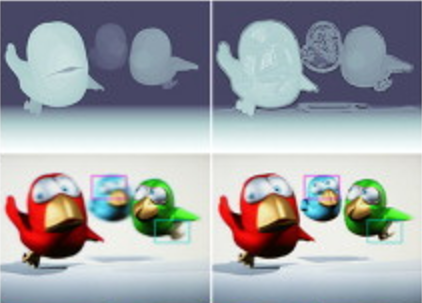Abstract
Glasses-free automultiscopic displays are on the verge of becoming a standard technology in consumer products. These displays are capable of producing the illusion of 3D content without the need of any additional eyewear. However, due to limitations in angular resolution, they can only show a limited depth of field, which translates into blurred-out areas whenever an object extrudes beyond a certain depth. Moreover, the blurring is device-specific, due to the different constraints of each display. We introduce a novel display-adaptive light field retargeting method, to provide high-quality, blur-free viewing experiences of the same content on a variety of display types, ranging from hand-held devices to movie theaters. We pose the problem as an optimization, which aims at modifying the original light field so that the displayed content appears sharp while preserving the original perception of depth. In particular, we run the optimization on the central view and use warping to synthesize the rest of the light field. We validate our method using existing objective metrics for both image quality (blur) and perceived depth. The proposed framework can also be applied to retargeting disparities in stereoscopic image displays, supporting both dichotomous and non-dichotomous comfort zones.

